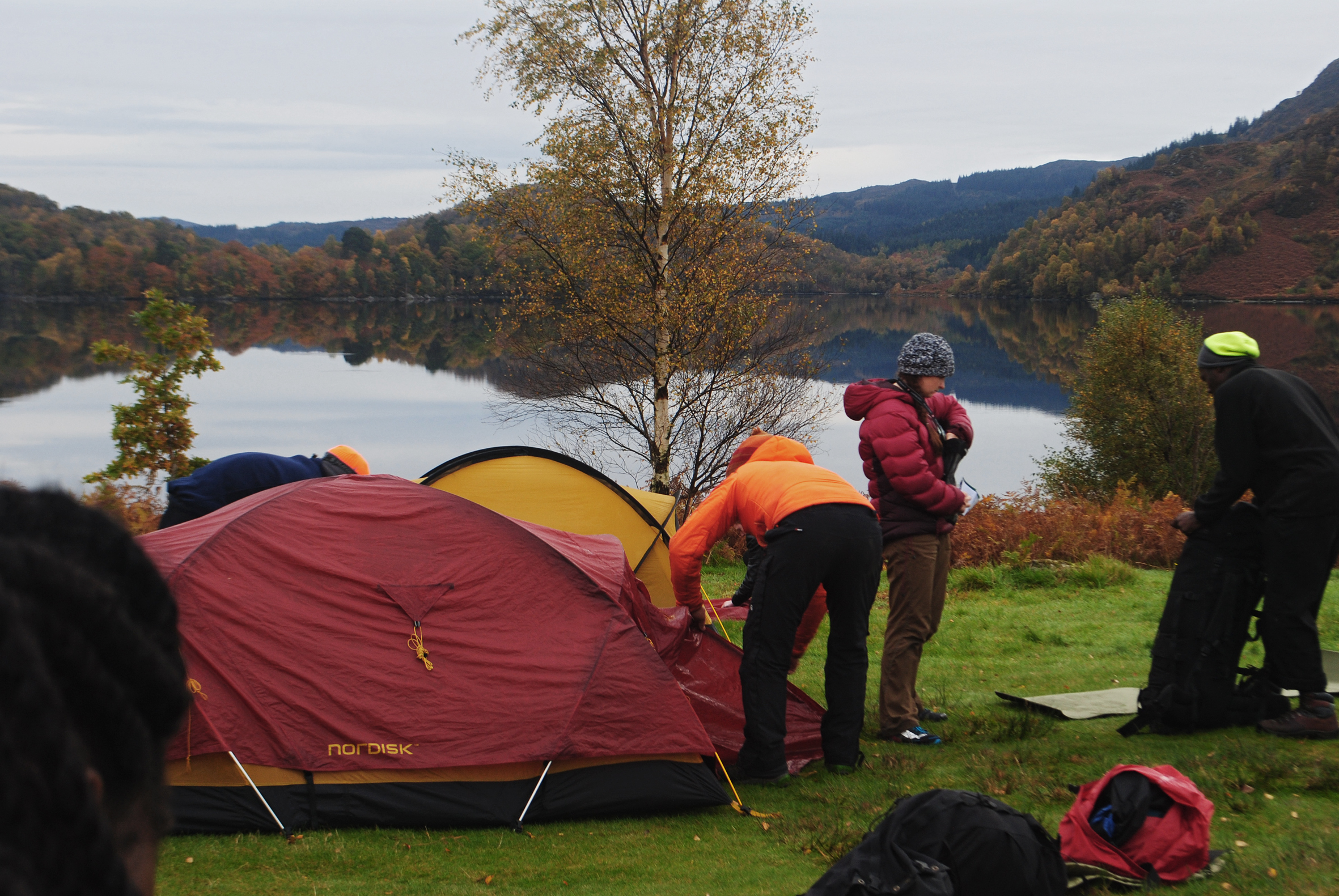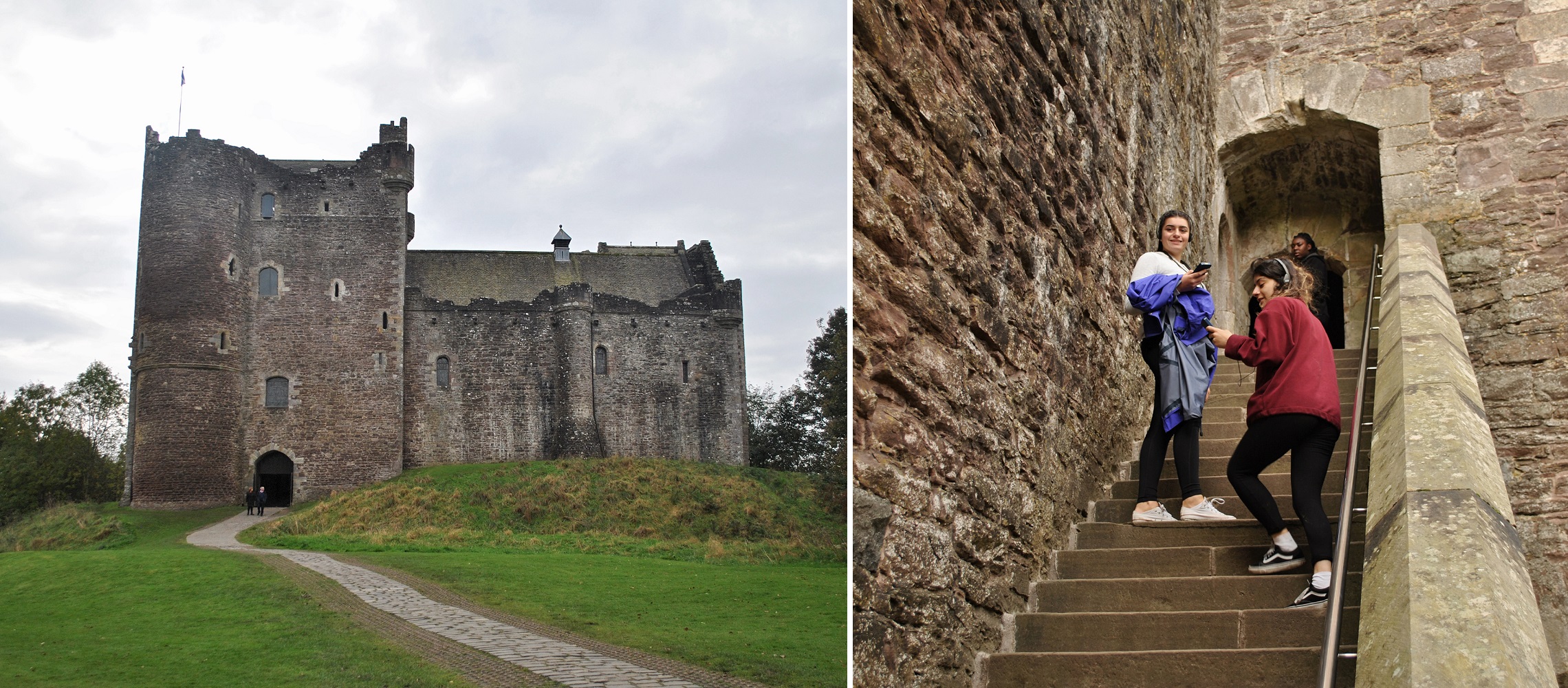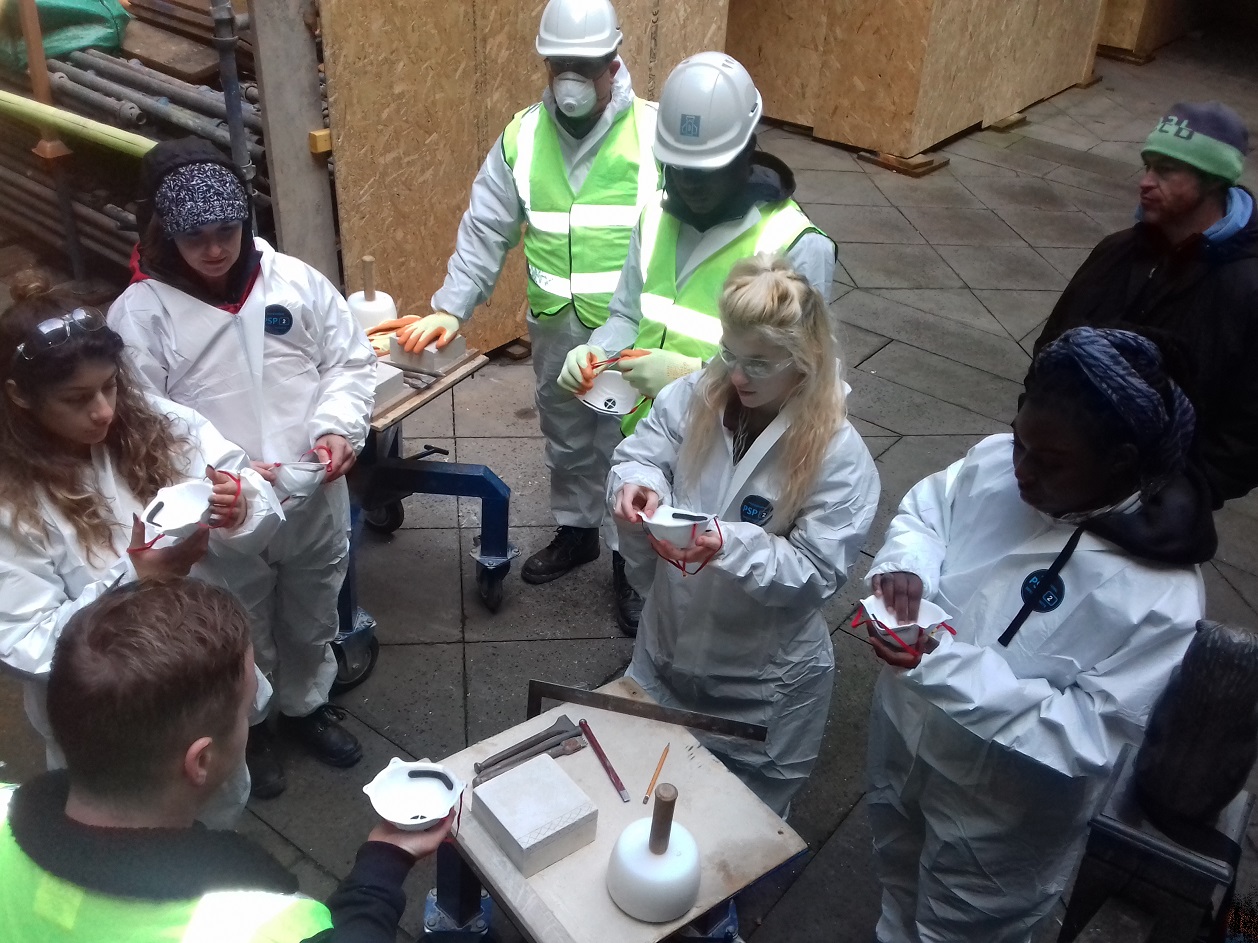Have you ever wondered what it might be like to walk in the footsteps of Scottish Drovers?
No? Up until recently, neither had a group of nine young carers from Glasgow. But after six days trekking 8 miles a day (a small amount of ‘cheating’ by bus may have happened), the lifestyles of the hardy Drover men and boys became a lot more tangible.
We were approached by the Venture Trust to deliver a heritage trail, bringing history alive to a group of young carers taking part in a ‘wilderness journey’. The group walked and camped along ancient paths trod by the Highland Drovers, as part of a week in the Scottish Highlands.

On their way we worked with the group as they learnt about the history and heritage of Drovers’ routes whilst undertaking activities developing valuable life skills such as problem solving and teamwork.
They visited the stunning Auchindrain Township for an overnight stay with a storyteller and house-ceilidh, meandered down Loch Katrine, called in at Doune Castle, and finished up in the Great Hall at Stirling Castle.
The heritage trail route
Six miles south of Inveraray and just an hour and a half from Glasgow, to visit Auchindrain is to step back in time. As Scotland’s best preserved existing farm township, Auchindrain’s traditional longhouses, byres and free roaming hens make this a magical place to discover Scotland’s lost rural history. The group got stuck in to storytelling and cooking their evening meal over an open fire; a fantastic way to start their journey.
Loch Katrine
Footsore but chipper, the group’s journey continued along the banks of loch Katrine, filming the stunning scenery.

They spent a few hours at Doune, with the group enjoying the Castle’s hilarious audio guides (featuring Terry Jones from Monty Python and Sam Heughan from Outlander).
At Stirling a tour of the castle was followed by a behind the scenes walk around the dizzying heights of some of the palace’s scaffolding. After inspecting the conservation work, they had a go on the tools with some stone carving, nicely topped off by a closing certificate ceremony in the Great Hall.

The journey was well documented, with the young people using a range of methods to record and interpret their findings, honing their skills at photography and film. Watch the results of all their hard work here:
Background and planning
Part of the ‘Young Roots’ programme to work with young carers from Glasgow, this partnership project between HES and The Venture Trust was a fantastic way to meet and work with Glasgow’s young carers. It was an absolute privilege to be able to create a truly unique journey and something special that the group would remember for a long time. From the first few workshops where we introduced them to the Highland Drovers, to planning the route and meeting them along the way, the energy and enthusiasm of all involved was infectious.
A two part project, the next phase of the Drover’s Trail will take place in April 2017, with a new group of young adventurers.
Thank you to everyone that helped make it happen!
…did you know?
- The first record of a Drover can be found in 1359. Two Scottish Drovers were given letters of safe passage through England with cattle, horses, and other goods.
- However almost constant war with England meant that until 1607 (when free trade was agreed with the union of the crowns under King James in 1603), dealing with England was seen as giving help to the enemy and actively prevented!
- To give you an idea of how much English suppliers relied on the Scottish Drovers, the London meat market of Smithfield recorded in 1794, 108,000 cattle arriving for slaughter, and at least 80% of these came from Scotland along the extensive network of Drove Roads.
- The herds would be at least 100 strong but could easily be up to 2,000 animals.
- The roads that the Drovers used weren’t modern roads as we know today – the Drover had to be careful not to wear down the animals’ hooves, which meant that the route had be soft so as not to hurt or damage them.
- Some Lowlanders were scared of the Drovers, seeing them as wild and rugged men. One person described them as “Great stalwart hirsute men, shaggy and uncultured and wild, who look like bears as they lounge heavily along.” They were however greatly skilled in navigating the wild lands and caring for the animals.

